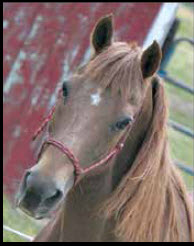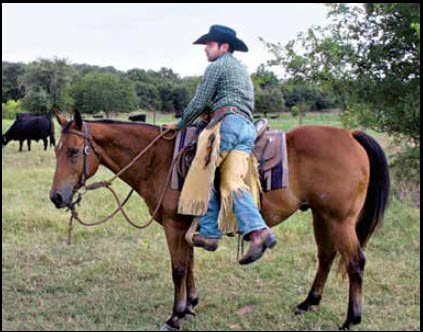 By: Deb Kitchenmaster
By: Deb Kitchenmaster
Happy spring! Time to get the shedding blades out and your favorite grooming tools as the horses are letting go of their winter coats. I must say the cordless clipper I have is wimpy. It doesn’t hold a charge past clipping two bridle paths! To those of you who are not familiar with the term bridle path, it simply is using a clipper behind the horses’ ears that is pointed towards the tail, clearing a path for the halter and bridle to fit comfortably. My rule of thumb to making a bridle path is to gently tip the ear back, and where the tip of the ear ends is as far as I clip. I enjoy grooming outside, allowing the wind or breeze to carry hair to varied places. The birds enjoy swooping up the horse’s hair to make their spring nests.
I celebrated another birthday this April. Isn’t it funny how our chronological years just seem to add up? However, there is a possibility (in the midst of yearly birthdays) to have our youth restored. Interested? The book of Isaiah says that …“those who wait upon the Lord will renew their strength; they shall MOUNT UP with wings as eagles; they shall run, and not be weary; and they shall walk, and not faint.”
The eagle cannot get new feathers until getting rid of the old ones. We too must put off, cast down, or lay aside the old and then put on the new. In the book of Ephesians we are told to put away lying and speak truth with our neighbor. Lying is part of the old nature. Speaking the truth is a characteristic of the new nature. My goodness, there are quite a few ‘old’ men in national leadership these days! That past sentence is not found in Ephesians; that happens to be me thinking out loud again. Just wanted to be clear! The new man (Ephesians) is created in righteousness and true holiness after God Himself. What if the wings of an eagle represented truth and grace? Can you imagine what our country would look like if we studied what our national bird symbolized and renewed our minds? We can walk, run, or mount up.

Is it possible that truth and grace can be seeded, planted, or rooted in the soil of your soul while mounted on the back of a horse? As an eyewitness, I can honestly say, “YES. Yes, it is possible!”
What does it look like to correctly mount and dismount a horse? Most people choose to mount from the near side (left) of the horse. You position your body near the horse’s shoulder, facing towards the horse’s tail with the reins (and possible a handful of mane) in your left hand. Next, you put your left foot in the stirrup and then bring your right hand to the pommel of the saddle. Now as you swing upon the back of the horse, make sure your right leg stays well above the horse’s back and rump. Then, you turn and face towards the horse’s ears, putting your right foot in the right stirrup as your seat settles in the saddle. You can choose to use a mounting block if you like. A nimble person may simply grab a piece of mane and with a quick flick of the wrist, just seem to float from standing with two feet on the ground to sitting squarely in the saddle. This is a very practical way to mount a nervous/excitable horse who is continually moving around.
To dismount hold your reins in your left hand with your right hand on the pommel of the saddle. Take both feet out of the stirrups, swing your right leg over the horse’s back and land with slightly bent knees to absorb the movement.
In ancient times, horsemen carried a sword. Most people are right handed; the sword was worn on the left so that it could be drawn more easily from the scabbard with the right hand. There was less chance of the sword being caught up in the mounting process.







